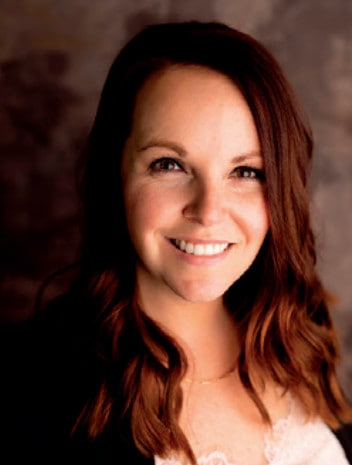Dr. Chelsea Erickson says that expanding your patient base may seem like “selling” but doing it correctly and armed with facts about your practice is expanding with influence and integrity.
 by Dr. Chelsea Erickson
by Dr. Chelsea Erickson
Do you ever read something that just makes you think about why you do what you do? I recently read an article written by Ben Waldman for DSP that was titled “Schrödinger’s Dentist”. In the article, he talks about dentists being poor at understanding selling and why that is a detriment to our patients.
The idea of selling dentistry is one that evokes strong feelings in dentists and patients alike. When researching the definition of “sell” there were two that struck me because of how at odds they were with each other. The first was the verb definition meaning to persuade someone the merits of. The second was the noun definition meaning a disappointment arising from being deceived. So when I asked dentists how they felt about “selling dentistry,” all that I interviewed stated some version of the first verb definition where selling is necessary for a patient to make the best choices for their health. However, when I asked non-dentists, potential patients, they tended to have a more negative outlook more closely aligned with the second definition. As many of us have likely experienced, when a patient is feeling “sold” they may make comments like, “You’re just trying to pay for that new car in the parking lot.” They said they didn’t want to be “sold.” They wanted to be cared for.
These conversations with the two groups revealed a glaring disparity in how dentists care for their patients and how patients perceive this care. Why does this discrepancy exist? How do we influence or persuade with integrity in a way that our patients can feel? Why is doing so important?
The last question is the easiest to answer, especially in the context of dental sleep medicine. If patients with sleep disordered breathing go undiagnosed or untreated, they are likely to suffer from one or more comorbidities such as heart attack, stroke, depression, and motor vehicle accidents. Clearly controlling these sleep issues can be very impactful not only to the patient being treated but also for their family and community. But, how then, do we get our patients to say yes to the treatment that they need, but don’t necessarily want?
LD Pankey’s cross of dentistry is a useful tool to help dentists influence with integrity. The four sides are “Know your Work,” “Know Your Patient,” “Know Yourself,” and “Apply Your Knowledge.” He taught us that successful application of these four principles rewards both the clinician and the patient.
“Know Your Work” is the first key to exceptional patient care. You can’t sell what you don’t have on the shelf and you can’t diagnose what you don’t know how to see. From a comprehensive care standpoint, a dentist having an understanding of sleep and its impact on a patient and their oral health is a necessity. We are required to screen for sleep related issues. “Knowing your work” is also critical for getting patients to trust you. When a dentist is deeply knowledgeable in their recommendations, they are perceived as being confident and trustworthy. This creates a feeling of safety and reassurance for the patient.
The second side of the cross , “Know Your Patient”, is the most crucial in crossing the divide between a patient feeling like they’re being “sold” or the patient feeling like they are being persuaded with integrity. Taking the time to get to know who your patient is on a deeper level goes a long way towards building trust. Understanding what motivates an individual patient, what their values are, how they make decisions and what barriers they have towards moving forward with care is essential. Knowing a patient at a personal level helps a dentist cater the care they are providing to the individual and helps them move towards health.
The third side of the cross of “Know Yourself” as it applies to “selling” patients optimal care, I interpret as obstacles and assumptions dentists might put in their own way unknowingly. Obstacles like thinking they don’t have enough time to connect with a patient. Or assuming a patient is going to say no because of cost. Assuming we have effectively communicated when we have not. When we become aware of our tendencies to add these obstacles and assumptions, we can be more proactive about identifying and removing them.
The last side of “Apply your Knowledge” is done most successfully after the knowledge of the work can be connected skillfully to knowledge about each individual patient. When applied properly, “selling” the same treatment may look different depending on the motivations of each patient. Take, for example, treatments involving a Mandibular Advancement Device. For one patient, you may have discovered that they love running and are always aiming for a personal record time. You can connect with their goals by having a conversation about how addressing their sleep will not only help them be healthier, it may even help them improve their running times. For another patient, you might have discovered that they are becoming more self conscious about the chipping and wear of their teeth. For them, explaining how the proper device will also prevent more chipping and wear from occurring might motivate them towards health.
We can become highly educated by seeking out quality courses. We can also learn how to proficiently connect with our patients through the lens of their wants, needs and values. We can learn about ourselves and how our own biases get in our way. When we master these and apply them effectively we move more towards the persuading of the merits of and away from disappointment by deception. And so we are “selling” in ways that benefit our patients by helping them move towards health and in turn the health of our practice.
Selling dentistry and expanding your patient base is also the theme of Dr. Ben Waldman’s article, “Schödinger’s Dentist.” He notes that we need to proficiently connect with our patients through the lens of their wants, needs, and values. Read his article here: https://dentalsleeppractice.com/schrodingers-dentist/



 Dr. Chelsea Erickson is a North Dakota native who grew up near the Turtle Mountains in Bottineau, North Dakota. She graduated in 2006 from the University of North Dakota with a Bachelor of Science in Chemistry. She then attended Creighton University where she graduated with her Doctor of Dental Surgery degree in 2010. She comes from a medical background and knew from an early age she wanted to become a medical professional. Dr. Erickson felt that dentistry was right for her for several reasons. Of the many medical fields she observed, she felt the dental profession had the privilege of getting to know their patients very well. It also grants practitioners the benefit of autonomy where decisions about treatment are made based on the patients’ needs and not dictated by a governing hospital or insurance company. Dentistry also provides regular hours allowing her to enjoy more time being a mother and wife. Dr. Erickson is in private practice at DeMers Dental and is a visiting faculty member at the Pankey Institute.
Dr. Chelsea Erickson is a North Dakota native who grew up near the Turtle Mountains in Bottineau, North Dakota. She graduated in 2006 from the University of North Dakota with a Bachelor of Science in Chemistry. She then attended Creighton University where she graduated with her Doctor of Dental Surgery degree in 2010. She comes from a medical background and knew from an early age she wanted to become a medical professional. Dr. Erickson felt that dentistry was right for her for several reasons. Of the many medical fields she observed, she felt the dental profession had the privilege of getting to know their patients very well. It also grants practitioners the benefit of autonomy where decisions about treatment are made based on the patients’ needs and not dictated by a governing hospital or insurance company. Dentistry also provides regular hours allowing her to enjoy more time being a mother and wife. Dr. Erickson is in private practice at DeMers Dental and is a visiting faculty member at the Pankey Institute.